Findings from a Landscape Study of Art-Science Collaboration Programs: Told with Bunnies
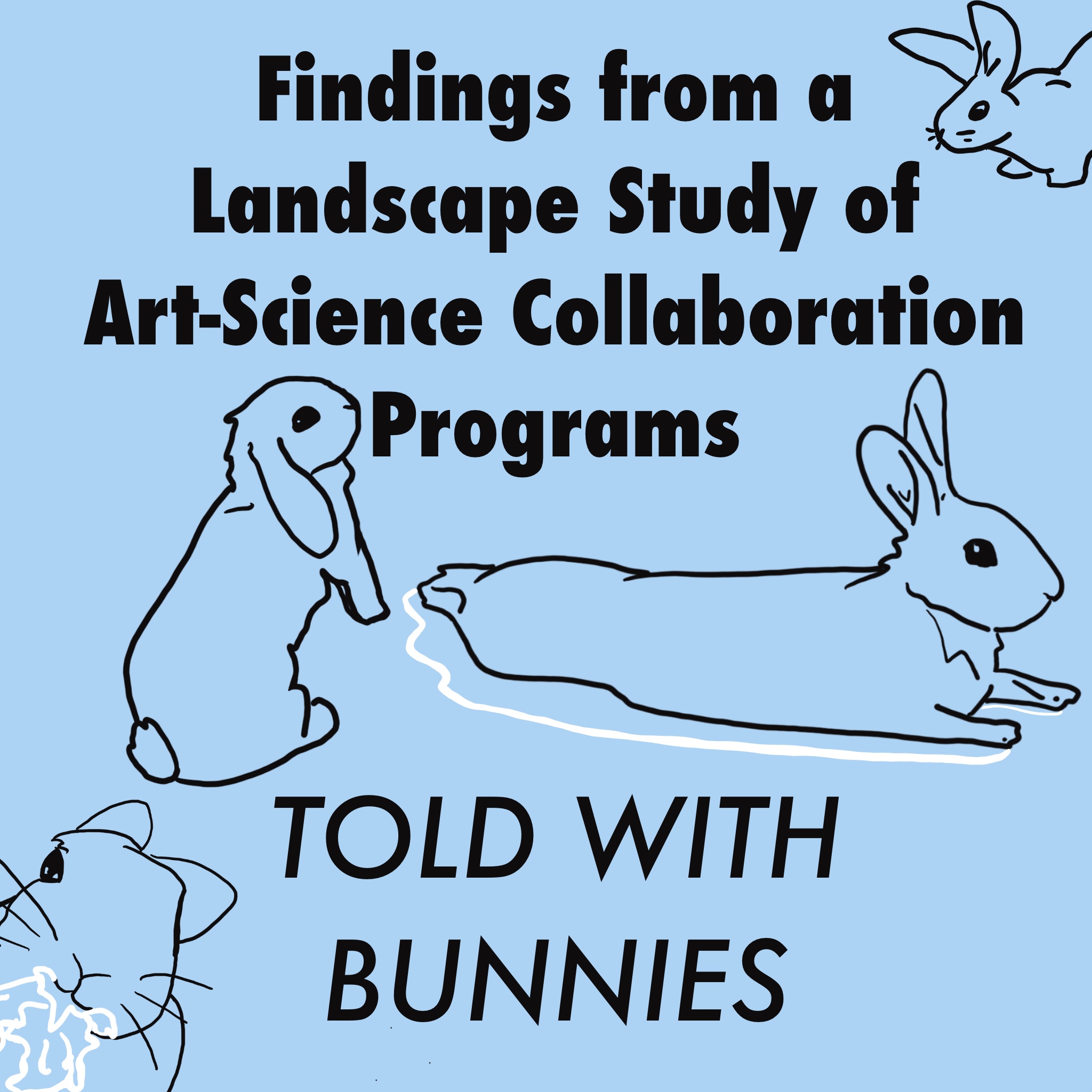
In this comic, bunnies present the findings from a landscape report on art-science collaboration programs.
We explored the landscape of art-science collaboration programs by assembling a database of more than 130 active programs and conducting interviews with key program directors. Our results reveal the immense opportunities and challenges for these boundary-spanning programs.
Findings in this comic drawn from The Landscape of Art-Science Collaboration Programs by Nic Bennett and Anthony Dudo. Check out the full report here.
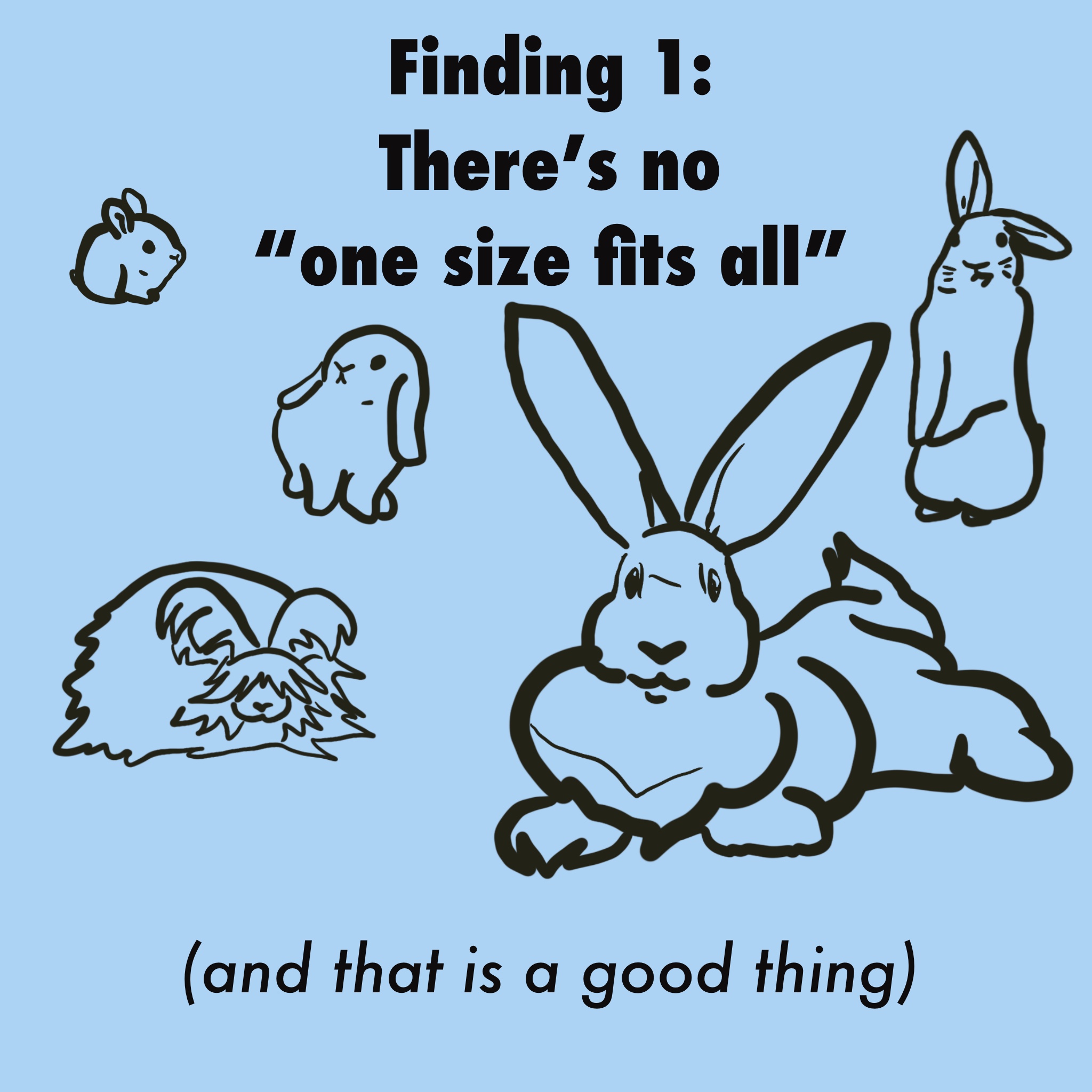
Finding 1: There is no “one-size-fits-all” design for art-science programs – and this is a good thing. Two helpful guidelines that emerged were to make programs meaningful (clear on the context-based goal) and manageable (honing down to what is practically possible).
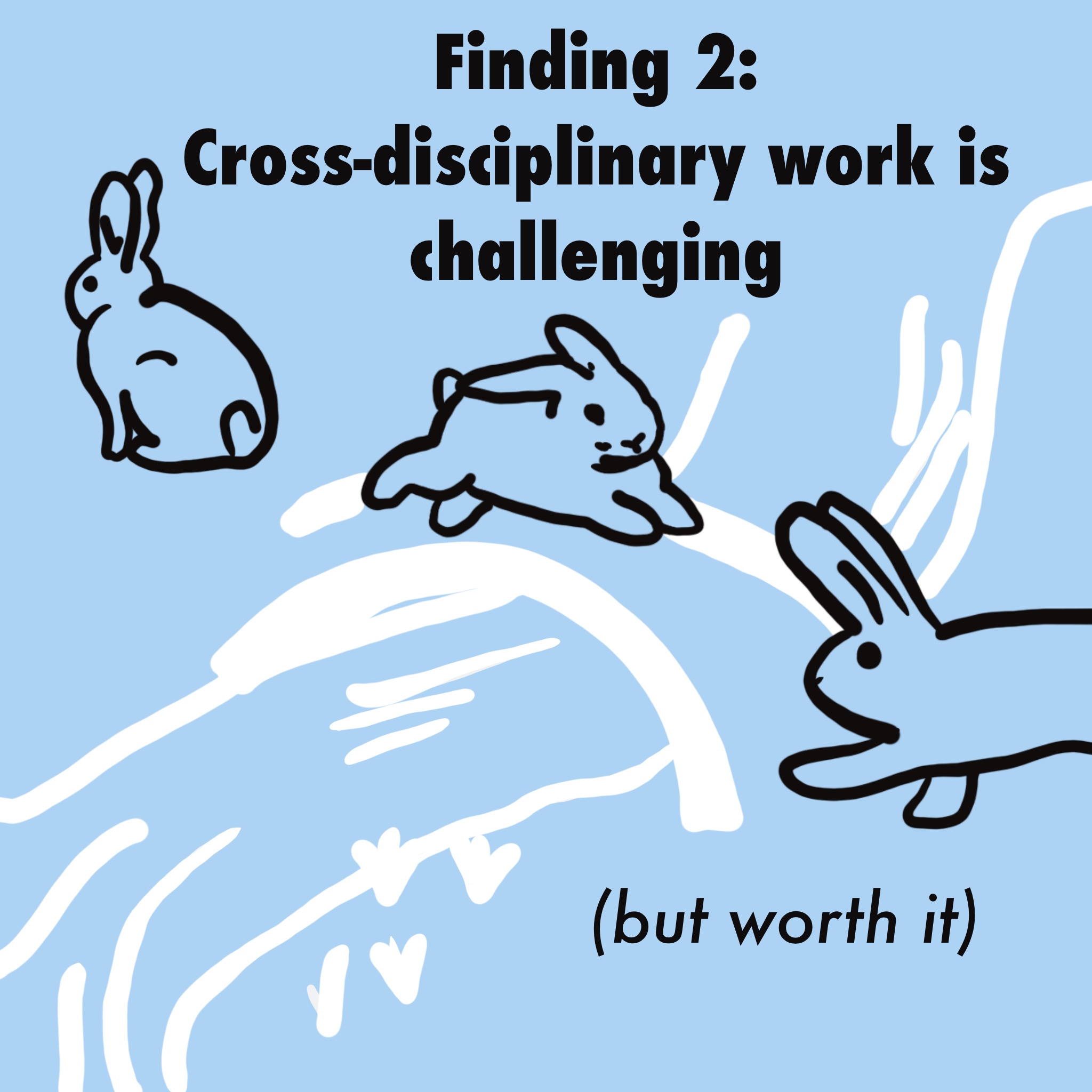
Finding 2: Working across disparate disciplines is a challenge, but these intersections are incredibly generative and create work that would not have been possible with art or science alone. Ideally, both artists and scientists leave transformed in some way.
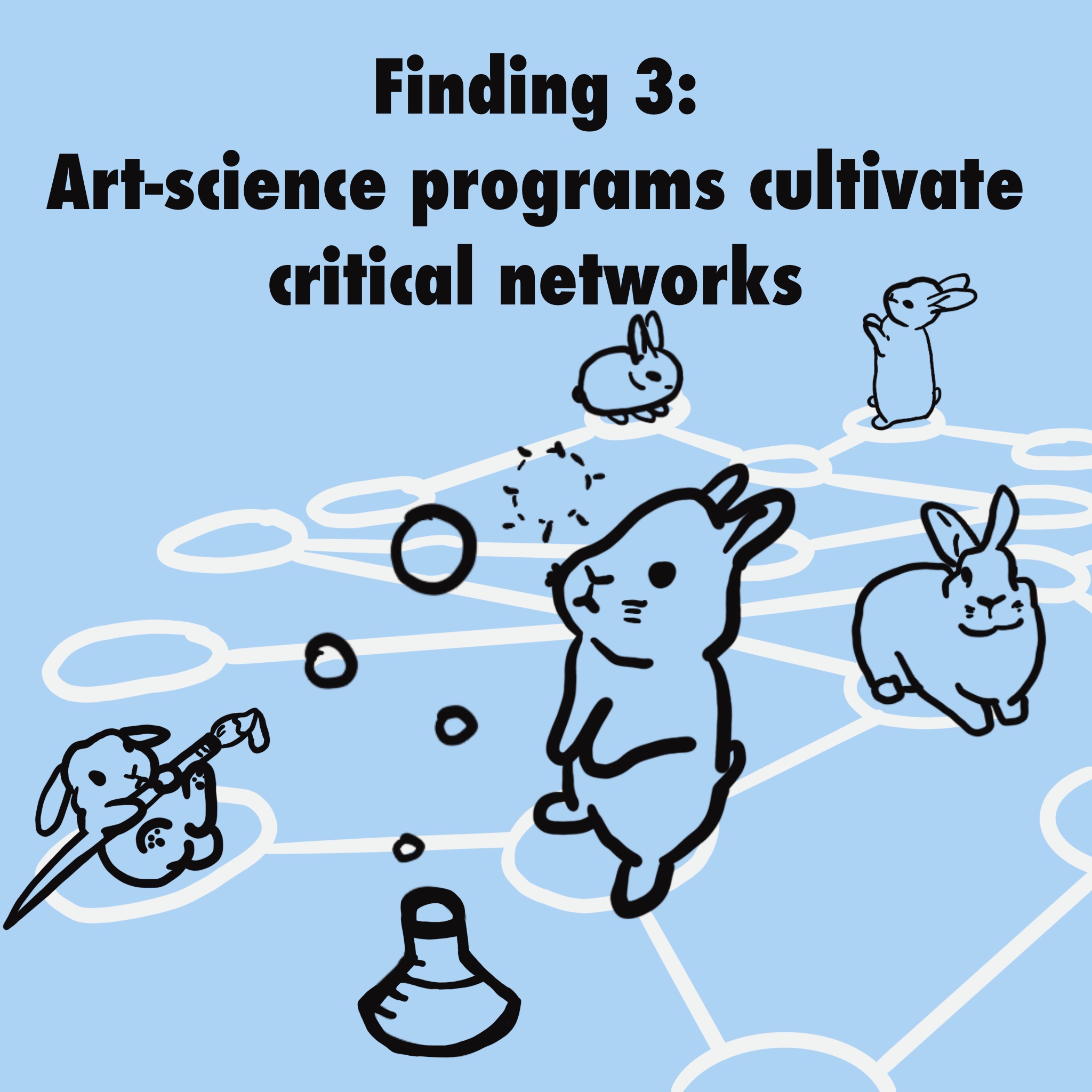
Finding 3: These programs play an important role in cultivating art-science networks by providing opportunities to connect people who often feel isolated in their work, which helps grow this niche and emerging transdisciplinary field.

Finding 4: Whether emphasizing the collaborative process or the final product, all programs appreciated the value of process in art-science collaborations. The collaborative process was often considered the most meaningful but was also the most difficult to evaluate.
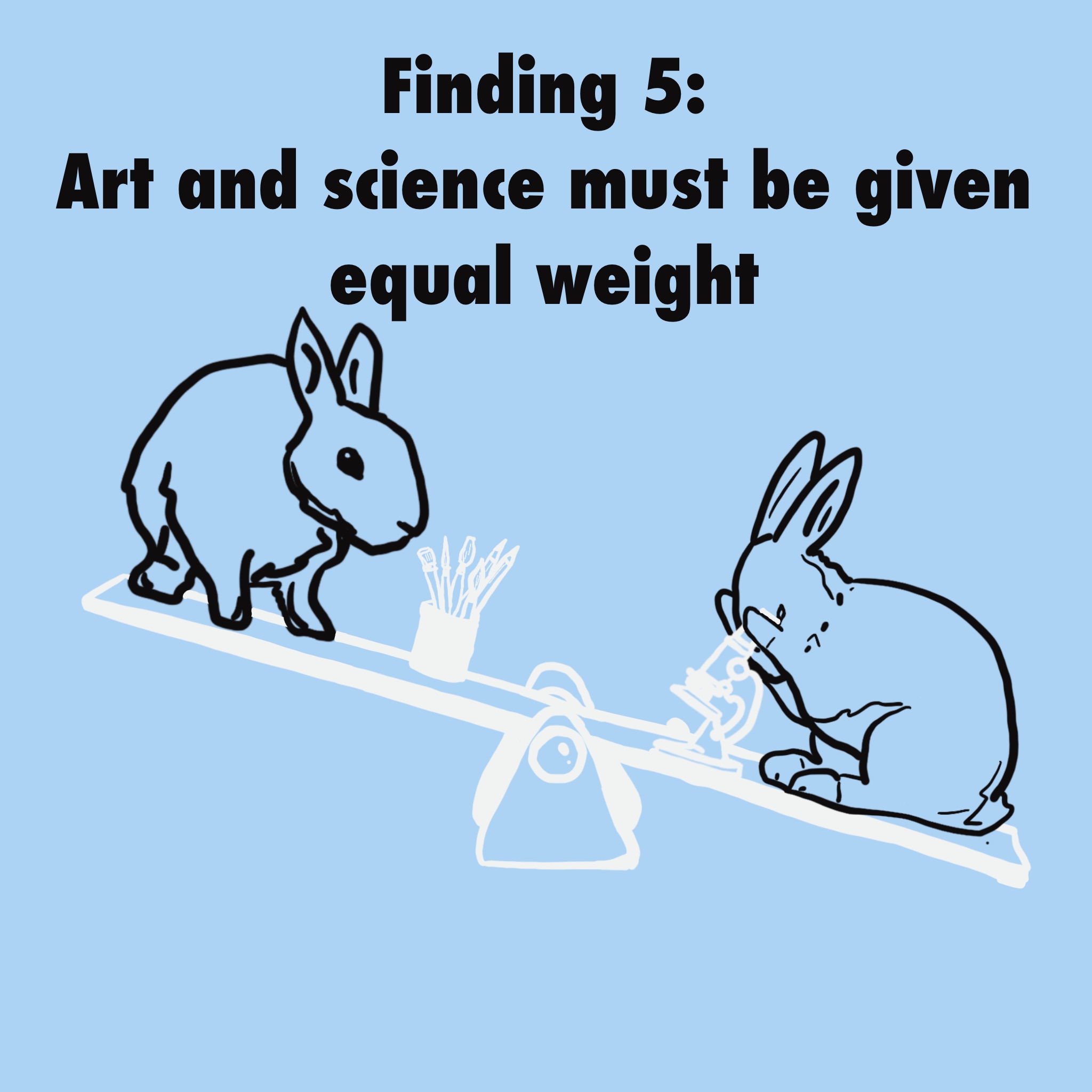
Finding 5: Program design should place art and science on equal footing, meaning both artists and scientists have equally weighted contributions. This should be a consideration when planning and setting up a program.
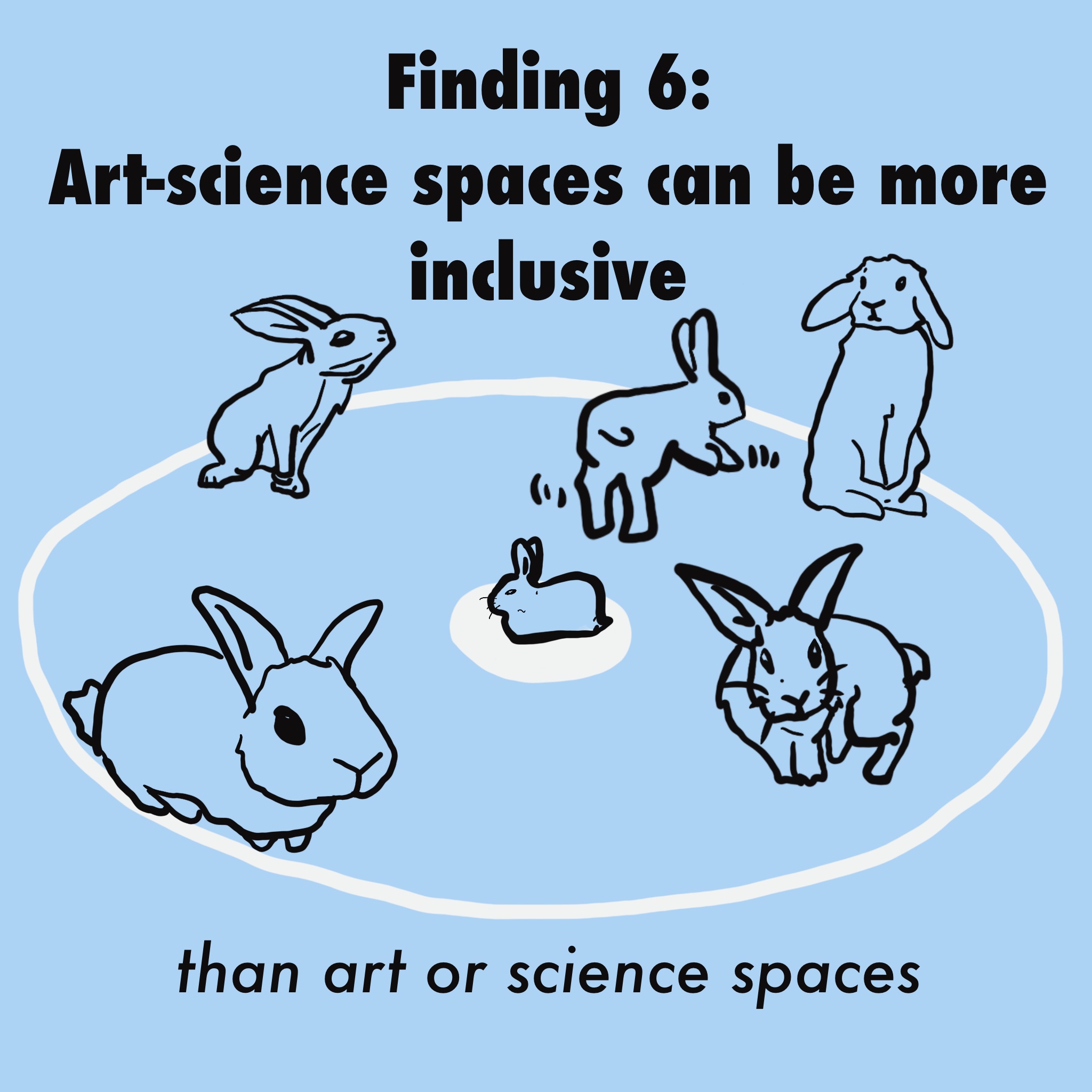
Finding 6: Art-science collaboration cultures are typically more inclusive than arts or science spaces. Bringing together multiple disciplines made both art and science spaces seem more relevant and welcoming to people with marginalized identities and helped make them both more accessible.
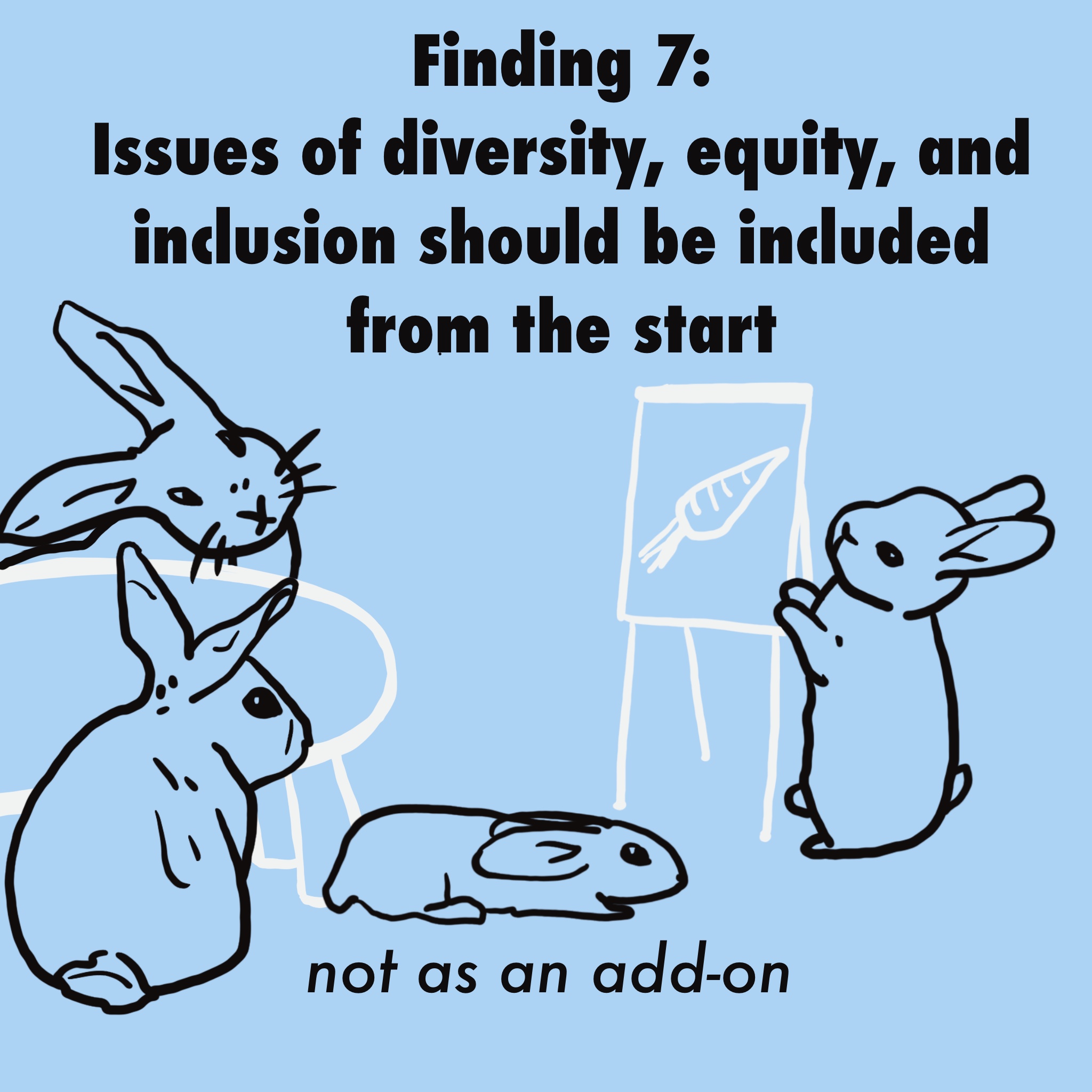
Finding 7: Issues of diversity, equity, inclusion, belonging, access, and justice should be incorporated into program design from the beginning and not treated as add-ons. These issues became a challenge for programs that did not address them from the start.
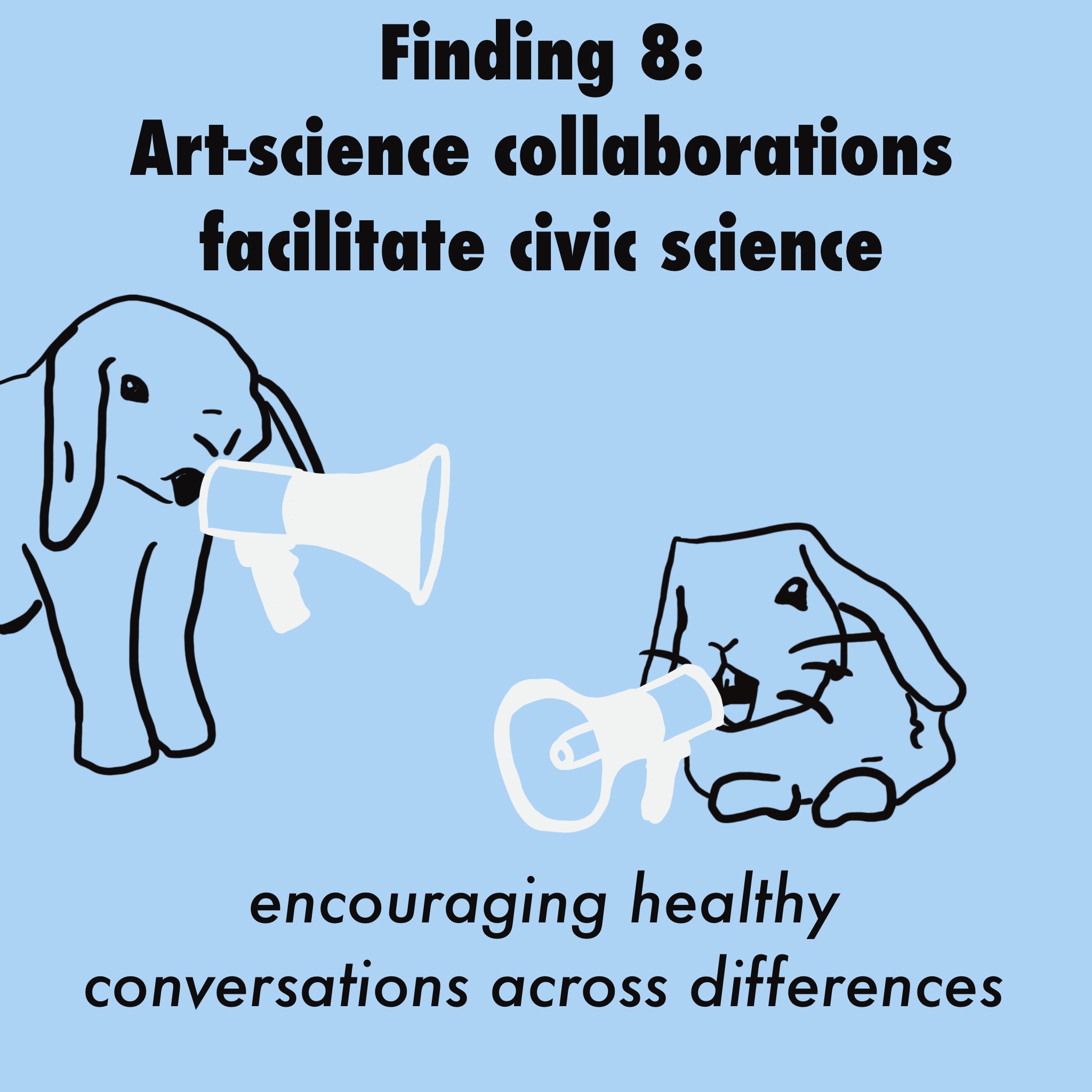
Finding 8: Art-science collaborations facilitate a culture of civic science, which is concerned with how scientists and public stakeholders can have healthy conversations despite differing values.
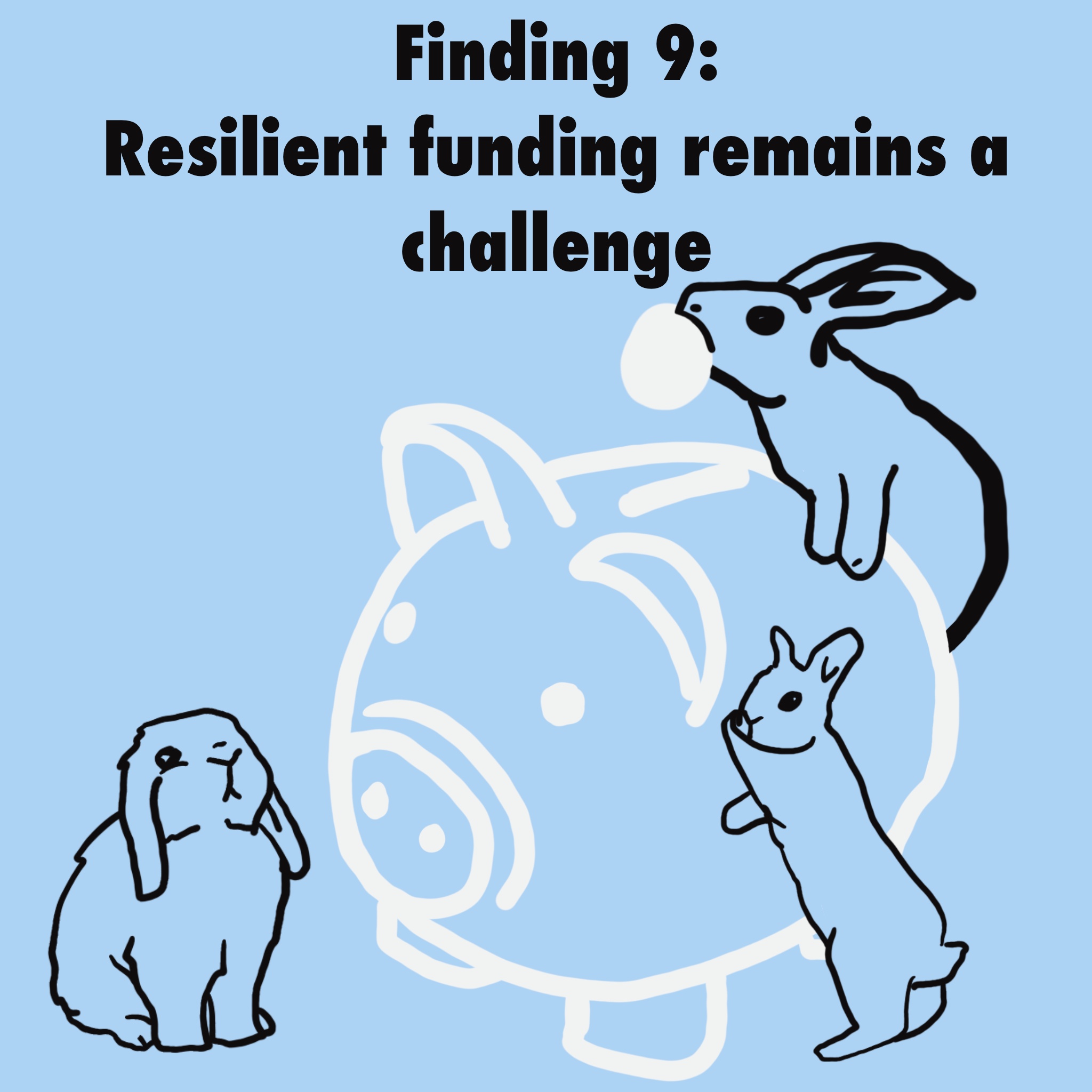
Finding 9: Resilient funding is a challenge for art-science collaboration programs. The most successful collaborations require substantial contact between partners, making them resource-intensive. The absence of resilient funding has made it difficult to conduct long-term impact evaluations of these programs.

Finding 10: Art-science collaboration programs seek better ways to demonstrate value to partners and funders. Collaborations often focus on the process rather than the product, which can make communicating impact difficult.
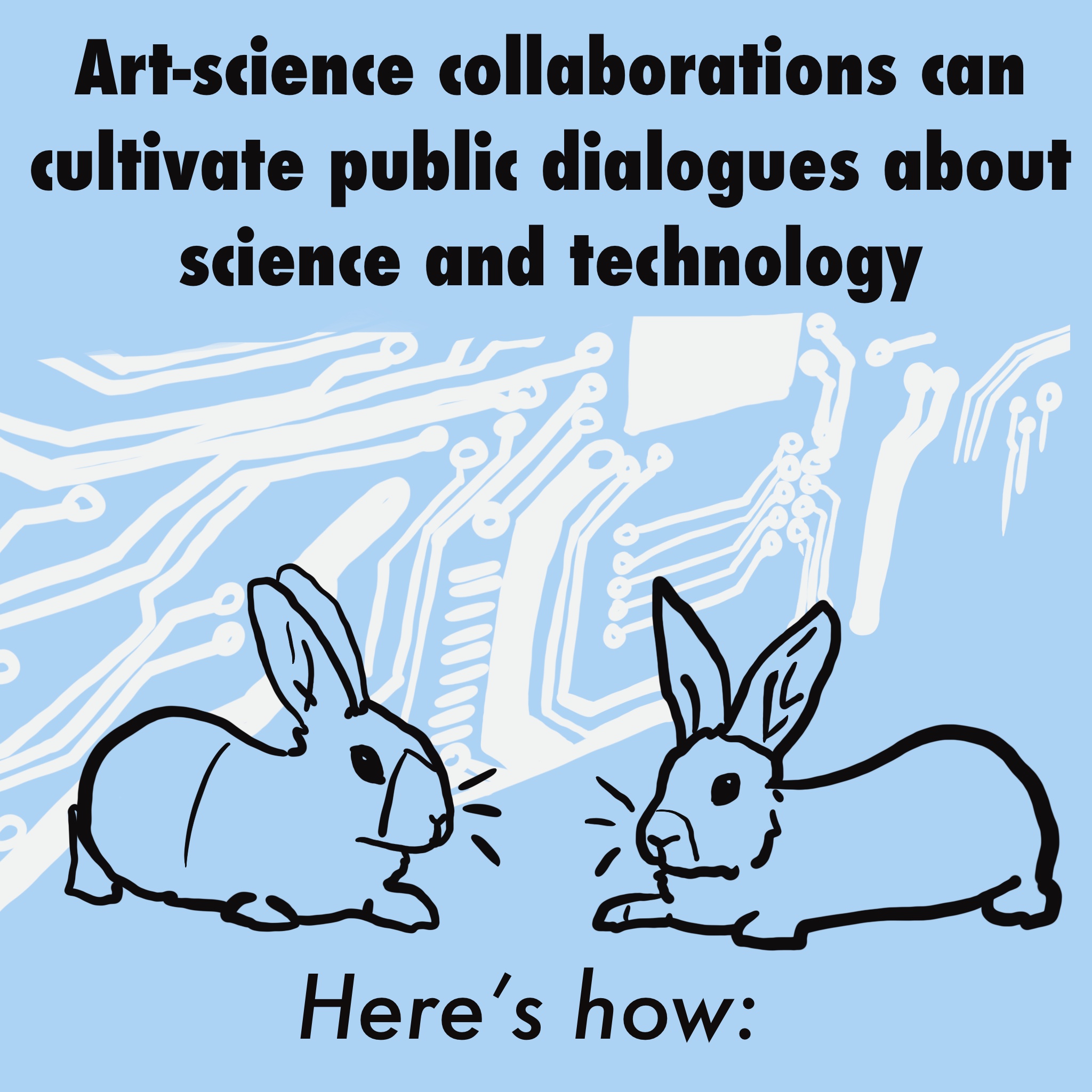
Art-science collaborations can play a key role in raising important questions and public dialogues about science and technology. Our interviews revealed three main suggestions for designing inclusive civic science initiatives:
- Design structures in ways that allow for cultures of power-sharing among different disciplines
- Combine art with science in ways that allow for more emotional, aesthetic, and ethical dialogues than those afforded by traditional forms of science communication
- Utilize art-science collaborations to create access for groups historically excluded from both art and science
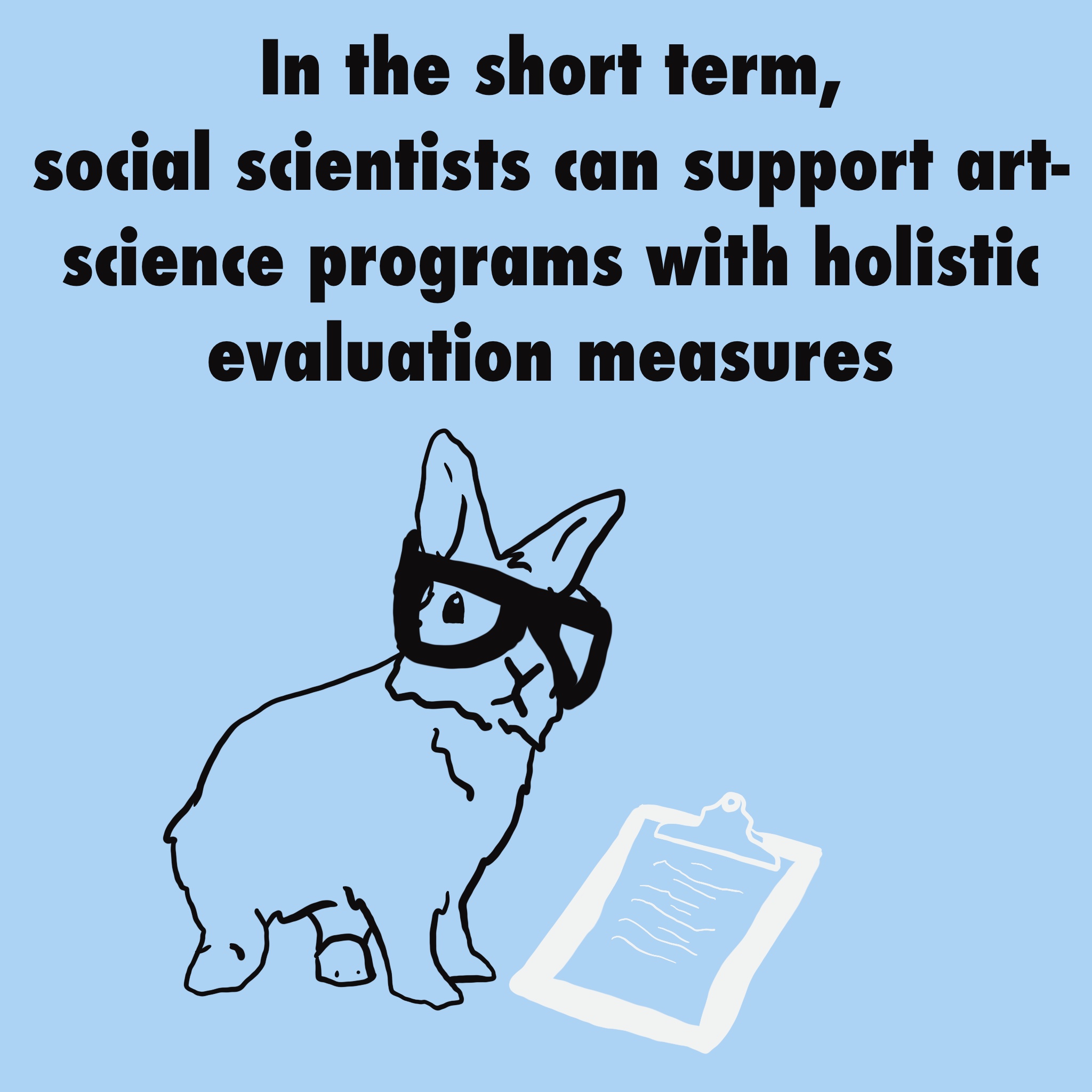
This way, programs can have both quantitative and qualitative measures, enabling them to better communicate across disciplines about what matters most to their programming.

An open and flexible grantmaking process might include:
- More interdisciplinary sources of funding, rather than grants specific to disciplines
- Funding that is agile to art-science organizations’ needs and capacities as well as to those of their partners
- Leading the art-science space by helping to shift definitions of success from the product to the process
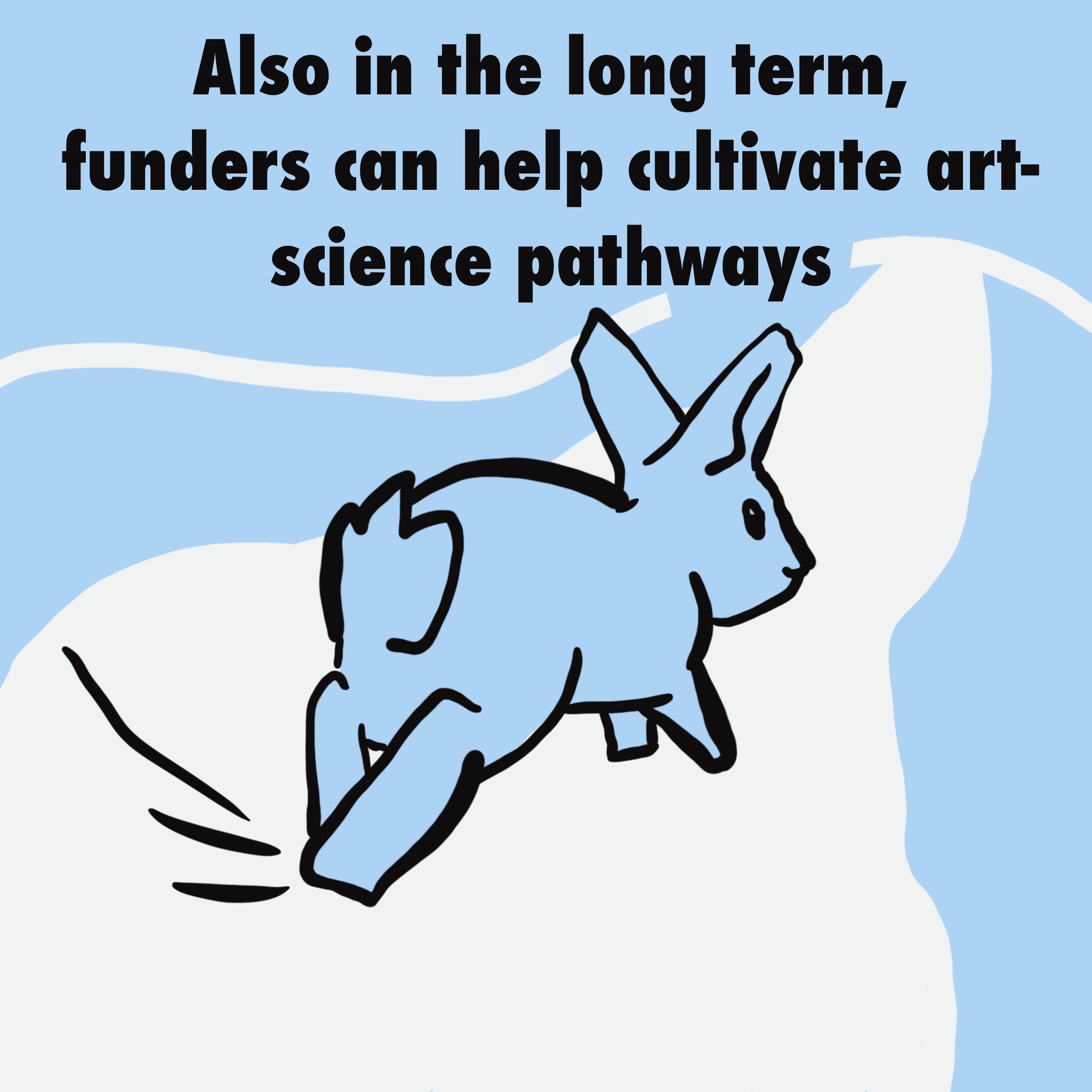
Catalyzing new pathways for art science might include:
- investing in creating art-science programs
- contributing to the solidification of these emerging networks
- creating support resources for art-science programs
Credits
Research conducted by Nic Bennett and Anthony Dudo.
Funding for the landscape study provided by the Burroughs Wellcome Fund and the Rita Allen Foundation. All opinions expressed in this report are those of its authors and do not necessarily reflect the perspectives of the funders.
Comics drawn by Nic Bennett.
Editorial assistance by Ellice Wallace.
Project supervision and morale boosts by Ampersand the bunny.
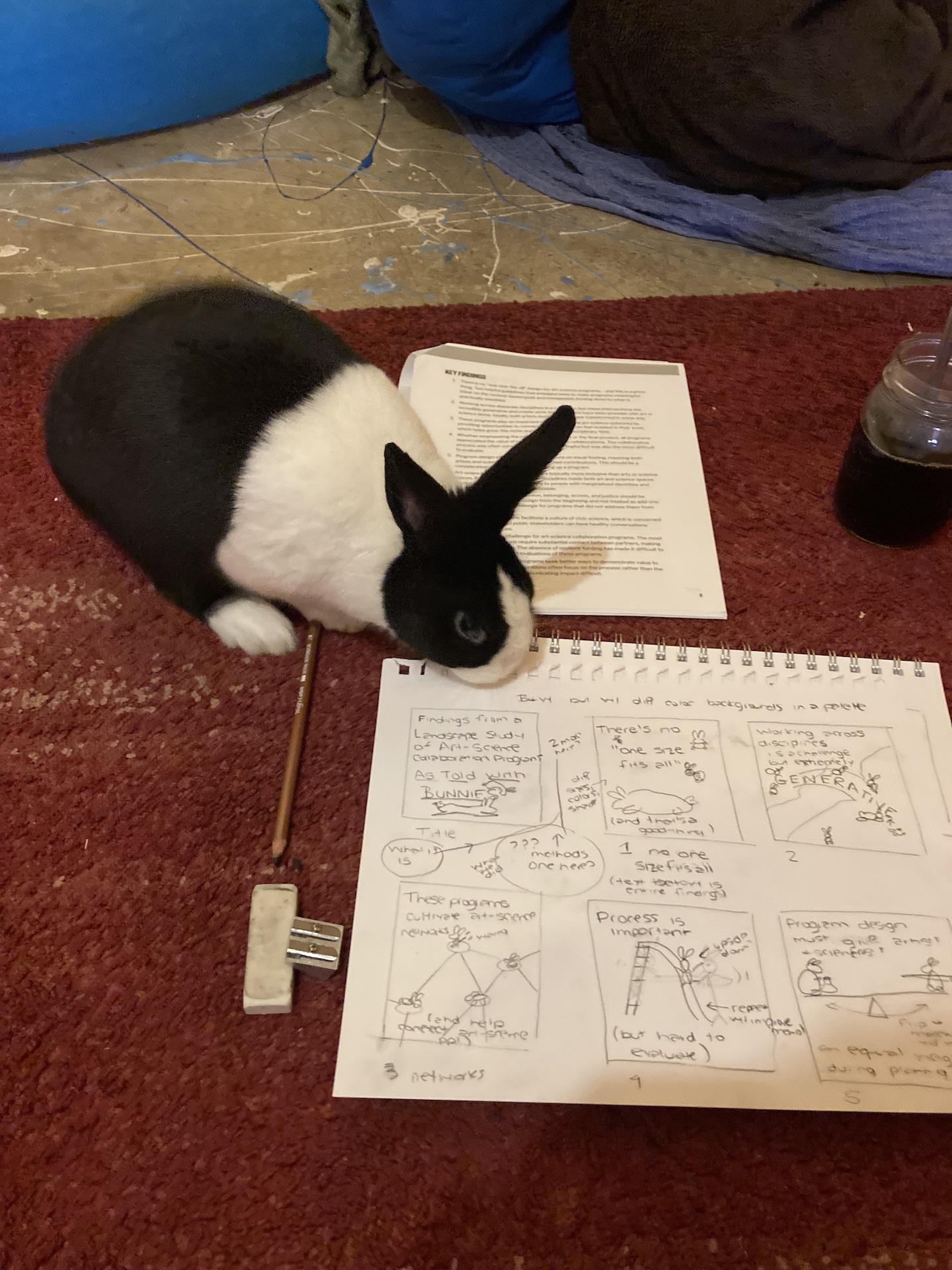
Ampersand the bunny inspects preliminary drawings for this comic. He takes his job seriously and places a high value on quality control.
Findings in this comic drawn from The Landscape of Art-Science Collaboration Programs by Nic Bennett and Anthony Dudo. Check out the full report here.
Bennett, N. & Dudo, A. (March, 2024). The landscape of art-science collaboration programs. Center for Media Engagement. https://mediaengagement.org/research/landscape-of-art-sciencecollaboration-programs
